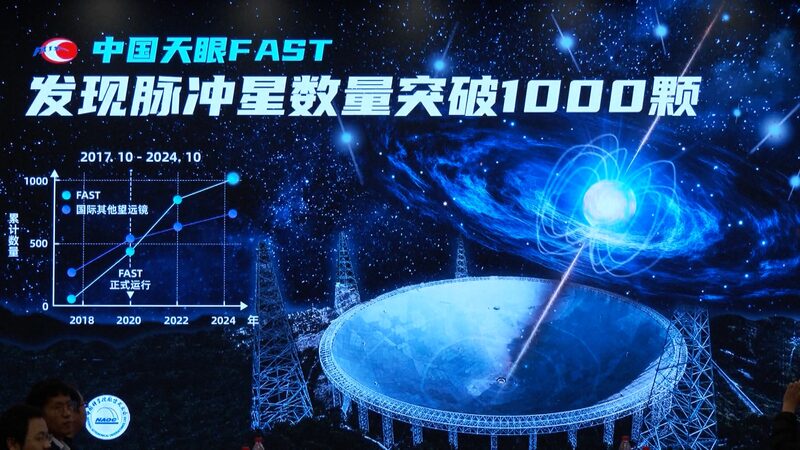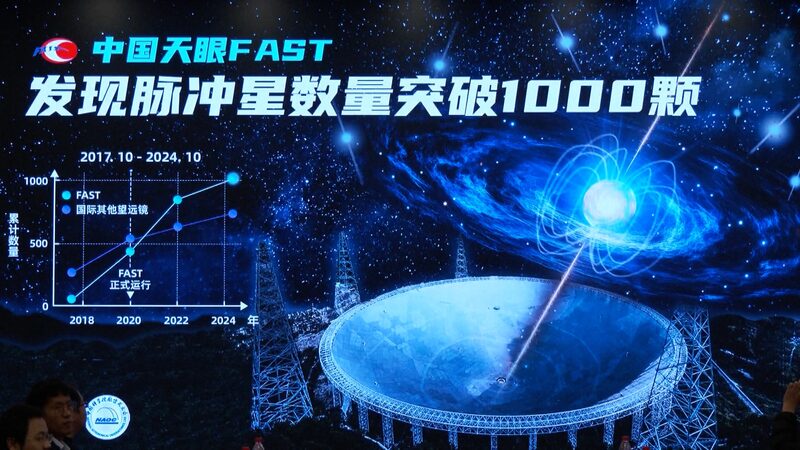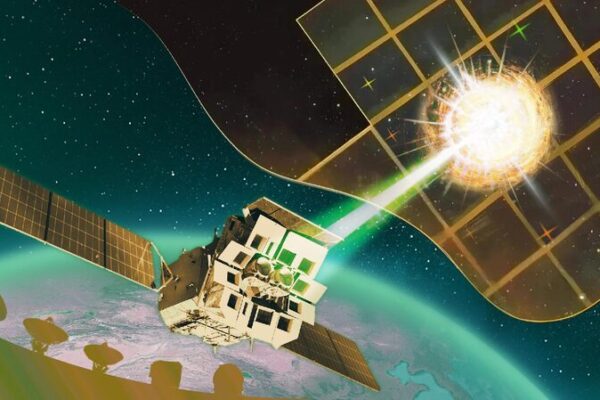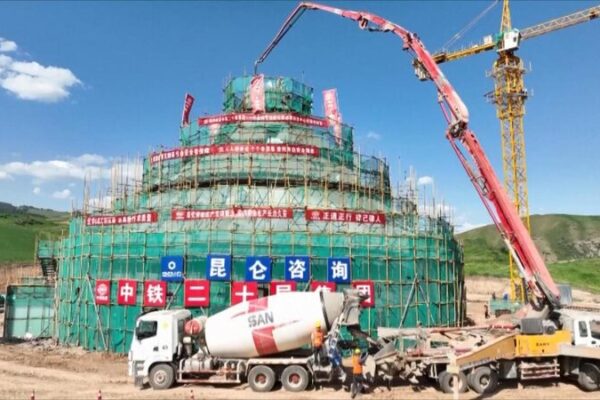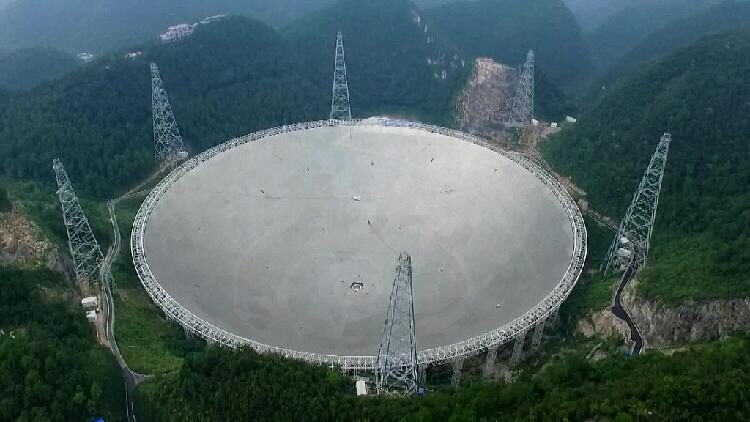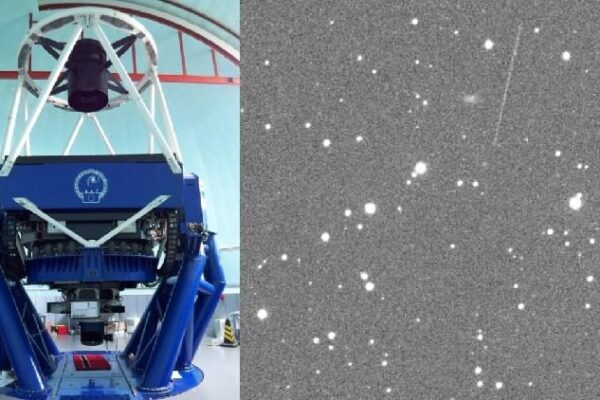In recent years, China has surged ahead in scientific research, making remarkable advancements in constructing and utilizing large-scale research facilities. These developments have not only led to significant breakthroughs across various fields but have also fostered global scientific collaboration. As 2024 wraps up, let’s take a look at some of China’s key scientific achievements facilitated by its major research infrastructures.
FAST Telescope Discovers Over 1,000 Pulsars
Since its launch in 2016, the Five-hundred-meter Aperture Spherical Telescope (FAST), China’s cutting-edge radio telescope, has identified more than 1,000 new pulsars. In November, the National Astronomical Observatories under the Chinese Academy of Sciences (NAOC) announced this impressive milestone. According to the NAOC, FAST’s discovery of new pulsars has surpassed the total number found by all other international telescopes combined.
Construction Begins on Phase II of the Spallation Neutron Source Project
In March 2024, China’s Spallation Neutron Source (CSNS), the country’s first research facility for intense pulsed neutron beams, entered its second phase of construction. Located in Dongguan City, Guangdong Province, the expansion aims to enhance the performance of the neutron source, providing more powerful experimental capabilities. The upgrade is expected to take nearly six years to complete.
Neutrino Detector Milestone with JUNO
December marked a significant achievement for the Jiangmen Underground Neutrino Observatory (JUNO), the world’s largest transparent spherical neutrino detector, as it reached its final critical stage by being filled with ultrapure water. Situated deep underground in Kaiping, Jiangmen City, Guangdong Province, JUNO is set to make substantial contributions to particle physics. This project offers new tools to explore the origins of the universe, particle interactions, and quantum mechanics, positioning China at the forefront of global physics research.
Upgrade of the Shanghai Synchrotron Radiation Facility
In May 2024, the upgraded Shanghai Synchrotron Radiation Facility (SSRF), a key scientific infrastructure in eastern China, passed national inspection and acceptance. This enhancement significantly increased the intensity and precision of the synchrotron radiation produced, facilitating advances in physics, materials science, and life sciences. The SSRF continues to reveal the mysteries of the microscopic world.
Development of a Super Intravital Microscope
A team of Chinese scientists from Tsinghua University has developed a super intravital microscope capable of observing the entire three-dimensional interactions of large-scale cellular networks at the mammalian organ level with low toxicity. Dubbed RUSH3D, the microscope offers significant insights into the architecture and operational dynamics of neural circuits, marking a breakthrough in neuroscience.
Einstein Probe Satellite Discovers Cosmic “Fireworks”
Launched in 2024, China’s Einstein Probe satellite has already made groundbreaking discoveries by capturing incredible astrophysical phenomena referred to as the “fireworks” of the universe. These findings provide new insights into the evolution of the cosmos and the nature of black holes and other celestial objects, offering fresh perspectives on some of the most fundamental questions in astrophysics.
As China continues to invest in large-scale scientific facilities, these achievements not only propel the nation’s scientific prowess but also contribute significantly to our understanding of the universe, marking an era of exciting discoveries and innovations.
Reference(s):
China's achievements in large-scale scientific facilities 2024
cgtn.com
